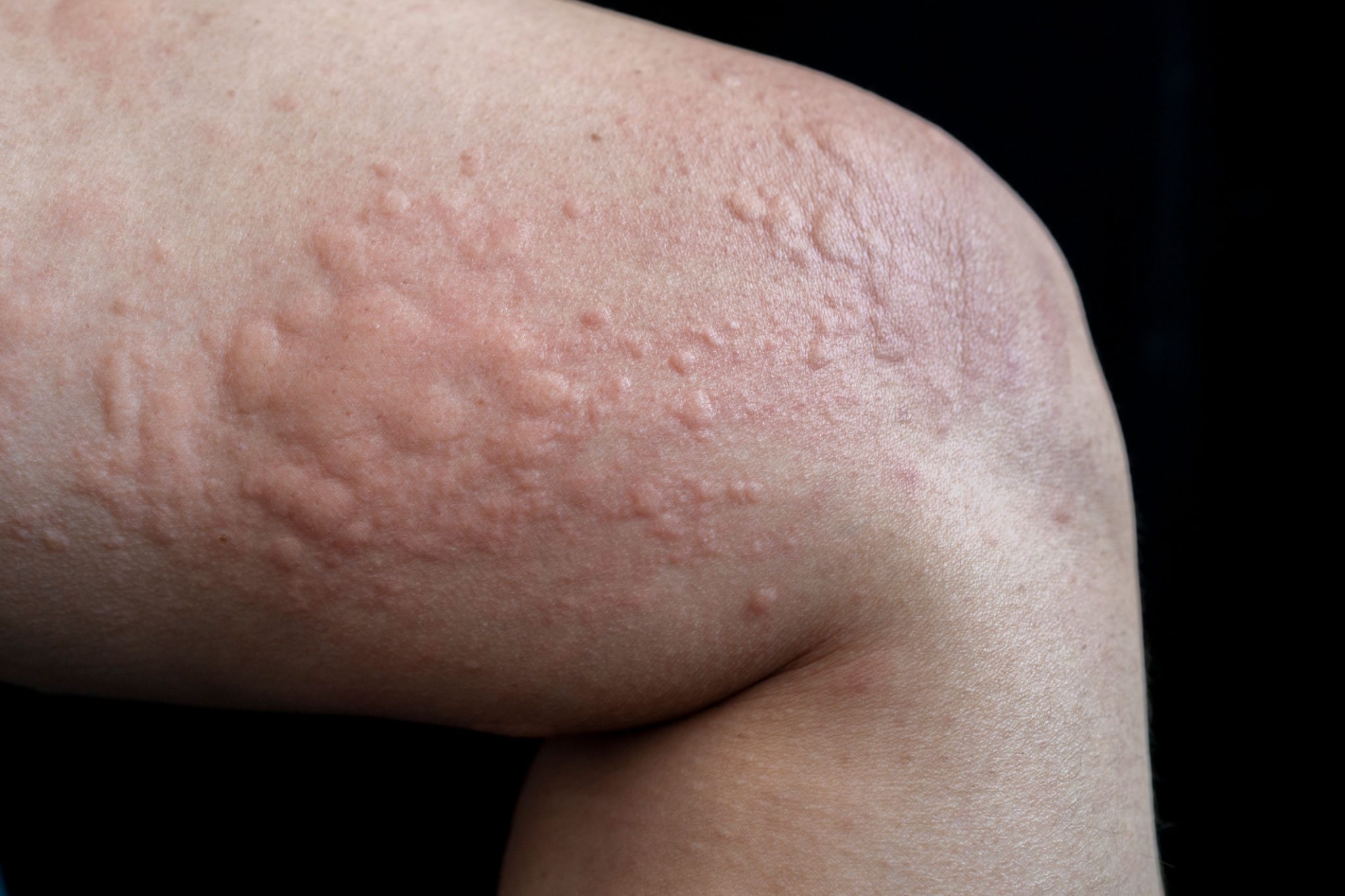Urticaria
Hives often appears as a raised, itchy rash. There can be many causes, including exposure to an allergen, a physical trigger, such as pressure from tight clothing, or an underlying health condition.This is for urticaria.The medical name for hives is “urticaria.”
Hives affects around 20% of people at some time in their lives. The issue can be chronic or acute. Acute hives lasts 6 weeksTrusted Source or less, and it may result from exposure to an allergen or irritant, such as a food or touching a nettle.
Chronic urticaria is a long-term condition. Doctors do not know exactly why it happens, but it may accompany a chronic health condition or an autoimmune condition. A person with chronic urticaria may have hives every day for months or years.

Causes
Hives can develop as a reaction to:
- An allergen
- Another physical trigger, such as extreme temperatures
- An underlying health condition
- Sometimes there is no clear reason why they occur. In the case of chronic hives, some experts believe that it may result from an autoimmune reaction, but they are still unsure.
Allergens
Hives can develop when the body reacts to an allergen. When an allergic reaction occurs, the body releases a protein called histamine. Next, tiny blood vessels called capillaries leak fluid. This fluid accumulates in the skin and causes inflammation and a rash. As fluid accumulates under the skin, small bumps form.
The reaction can occur if a person consumes something or touches something that they are allergic to. This is known as “contact urticaria.”f acute hives results from an allergic reaction, the cause may be:
A medication, such as:
- Some antibiotics
- Some nonsteroidal anti-inflammatory drugs, or NSAIDs, such as aspirin
- Angiotensin converting enzyme inhibitors, which are drugs for high blood pressure nuts, eggs, seafood, or another food allergen latex
- kiwi, banana, chestnuts, or mango, in people with a latex allergy
- Some plants, including nettles, poison ivy, and poison oak
- Additives in some foods, cosmetics, and other products
Physical triggers
A physical factor other than an allergen can cause hives.
Here are some possible triggers:
- Sunlight exposure
- Scratching or rubbing the skin
- Pressure, from a tight belt, for example extreme temperatures or changes in temperature a high body temperature, due to sweating, exercise, anxiety, or a hot shower adrenalin, which the body releases during exercise and exposure to heat or stress UV light from a tanning bed water on the skin, in rare cases vibration, in rare casesSymptoms
Hives often has these features:
- The characteristic raised skin lesions can appear in any area of the body.
- The lesions often appear in batches.
- They tend to be itchy.
- They may be pink, red, or skin-colored.
- If a person presses in the middle, the coloring may fade.
- The bumps usually last no longer than 24 hoursTrusted Source, but new ones may form.
- Their size can range from that of a pinprick to several inches across.
- Hives does not always appear as bumps. The lesions may also be:
- Tiny spots
- Blotches
- Thin, raised lines
- The time it takes for the lesions to appear depends on the cause.
In someone with contact urticaria, the skin reacts to an allergen, such as latex or an irritant.
Home remedies
Tips for reducing hives symptoms include:
- Using a soothing lotion or cool compresses to ease the itchiness
- Wearing loose, light, cotton clothing
- Avoiding scratching
- Choosing soaps, moisturizers, and other cosmetics for sensitive skin
- Avoiding overheating by taking cold showers and using a fan
- Avoiding sun exposure
- Avoiding exposure to known triggers
Almost any food can cause an allergic reaction. Some common triggers include:
- milk
- eggs
- nuts
- soy
- wheat
- seafood
- sesame
Keeping a record of meals and symptoms can help identify which foods are triggering the reaction.
